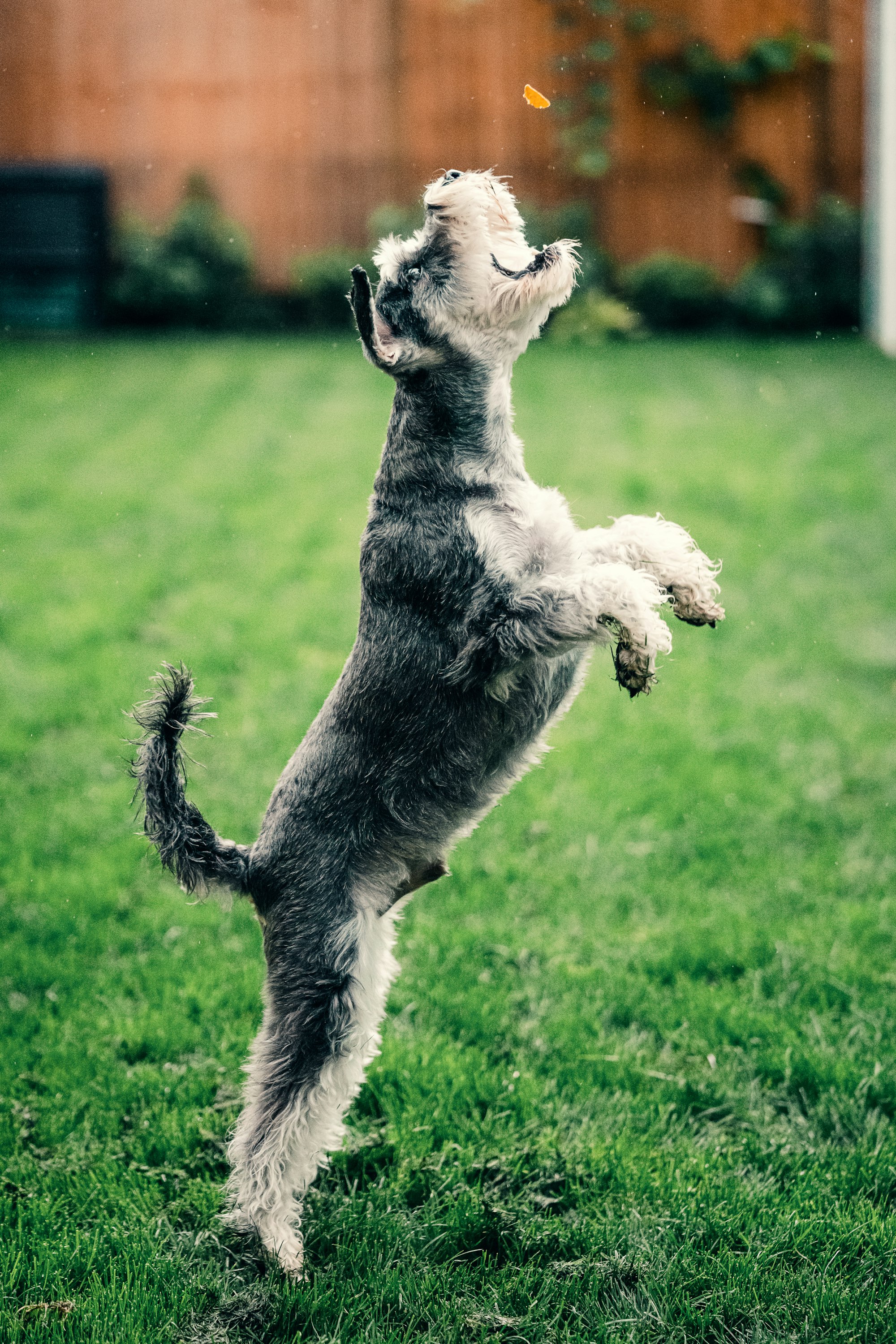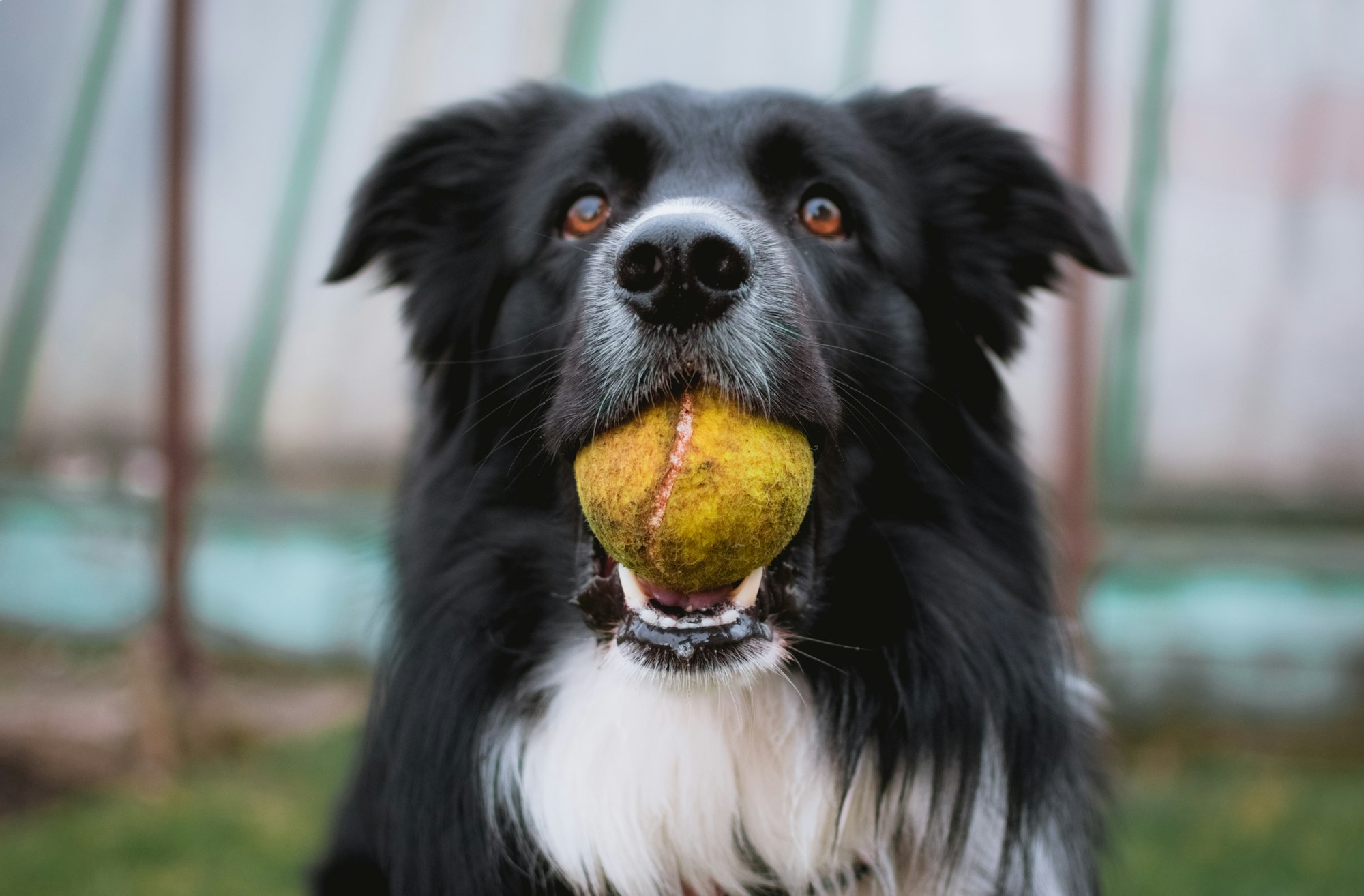Dogs are not only loyal companions but also highly intelligent animals capable of learning and performing impressive tricks. Teaching your dog tricks not only strengthens the bond between you and your furry friend but also provides mental stimulation and physical exercise. In this article, we will explore a variety of dog tricks for all skill levels, from basic commands to advanced feats, and discuss the benefits of training your dog's mind and body.
Basic Tricks for Beginners

Sit: One of the fundamental commands every dog should learn is to sit. Start by holding a treat close to your dog's nose and slowly move it upwards. As their head follows the treat, their bottom will naturally lower into a sitting position. Once they are in a sitting position, reward them with the treat and praise. Repeat this process, adding the command "sit" each time, until your dog responds consistently.
Stay: Teaching your dog to stay is crucial for their safety and obedience. Begin by asking your dog to sit. Once they are sitting, hold your hand out with the palm facing towards them and say "stay" in a firm but calm tone. Step back a few feet and if your dog remains in the sitting position, reward them with a treat and praise. Gradually increase the distance and duration of the "stay" command over time.
Lie Down: The "lie down" command is useful for keeping your dog calm and relaxed. Start with your dog in a sitting position, then hold a treat near their nose and slowly move it downwards towards the ground. As they follow the treat, their body will lower into a lying position. Once they are lying down, reward them and use the command "lie down" consistently.
Shake Hands: Teaching your dog to shake hands is a charming trick that impresses both family and friends. Begin by having a treat in your closed hand and placing it near your dog's paw. Say "shake" and wait for them to paw at your hand. When they touch your hand with dog paws, open your hand and reward them with the treat. Practice this regularly until your dog masters the handshake gesture.
Intermediate Tricks to Challenge Your Dog's Abilities

Roll Over: To teach your dog to roll over, start with them lying down on their stomach. Hold a treat close to their nose and slowly move it towards their shoulder, causing them to roll onto their side. Once they are on their side, continue to move the treat in a circular motion, encouraging them to roll onto their back. Finally, guide them with the treat until they complete a full roll. Reward them with treats and praise for their progress.
High Five: The "high five" trick is an excellent way to showcase your dog's social skills. Begin by asking your dog to sit. Hold a treat in your closed hand and place it near their chest. As they lift their paw to reach for the treat, say "high five" and open your hand to reveal the treat. Reward them for their successful high five and practice the trick regularly to reinforce the behavior.
Spin: Teaching your dog to spin is a fun and visually appealing trick. Start with your dog in a standing position. Hold a treat near their nose and slowly move it in a circular motion away from their body. As they follow the treat, their body will naturally pivot in the direction of the circular motion. Once they complete a full spin, reward them with a treat and praise.
Play Dead: The "play dead" trick is an entertaining and impressive trick. Begin by having your dog lie down on their side. Hold a treat close to their nose and slowly move it towards the ground, causing them to roll onto their back. Once they are on their back, give the command "play dead" and reward them with treats and praise. This trick requires patience and practice, but it's a crowd favorite.
Advanced Tricks to Impress and Entertain

Jump Through a Hoop: Jumping through a hoop is a thrilling trick that showcases your dog's athleticism. Start with your dog in a sit-stay position. Hold a hula hoop a few inches off the ground and encourage your dog to jump through it using treats and praise. Gradually increase the height of the hoop as your dog becomes more confident and skilled. Remember to reward them generously for their efforts.
Fetch a Specific Object: Teaching your dog to fetch a specific object is an advanced trick that requires both obedience and object recognition. Begin by associating a specific command with the desired object, such as "fetch the ball." Use the command consistently as you play with your dog, and encourage them to pick up the object. Reward them when they bring the correct object to you. With practice, your dog will learn to differentiate between various objects and retrieve them on command.
Balance a Treat on the Nose: Balancing a treat on your dog's nose is a delightful trick that requires focus and self-control. Start by having your dog sit or lie down. Place a treat on their nose and give the command "wait" or "stay." Gradually increase the duration of the wait before allowing your dog to catch the treat. Reward them for their patience and accuracy. This trick may take time to master, so be patient and persistent.
Speak or Bark on Command: Teaching your dog to speak or bark on command is a versatile trick that can be used for various purposes. Start by selecting a specific command word, such as "speak." Prompt your dog to bark by making a sound or showing excitement. Once they bark, reward them with treats and praise. Practice the command regularly to ensure your dog understands the distinction between barking on command and excessive barking.
Tricks for Mental Stimulation and Problem-Solving

Hide and Seek: Hide and Seek is an engaging game that stimulates your dog's mental abilities and taps into their natural instincts. Start by asking your dog to sit and stay. Hide somewhere in the house or yard and call out your dog's name. Encourage them to find you and reward them with treats and praise when they do. Gradually increase the difficulty of the hiding spots to keep the game challenging and exciting.
Puzzle Toys: Puzzle toys are excellent tools for mental stimulation and problem-solving. These toys typically contain hidden treats or compartments that require your dog to figure out how to access them. Introduce your dog to a variety of puzzle toys and observe how they engage with each one. Provide guidance and encouragement as needed, and reward them when they successfully solve the puzzle.
Finding Treats or Objects: Teaching your dog to find treats or objects using their sense of smell is a rewarding and mentally stimulating activity. Start with a simple game of hiding treats around the house or yard and encourage your dog to locate them using their nose. As they become more proficient, you can increase the difficulty by hiding treats in more challenging locations. This game taps into their natural abilities and provides a sense of accomplishment.
Ringing a Bell: Training your dog to ring a bell is a useful and interactive trick. Hang a bell by the door at a level your dog can reach with their nose or paw. Every time you take your dog outside, prompt them to touch the bell with their nose or paw. When they do, immediately open the door and reward them with praise and a treat. With consistency, your dog will learn to associate the bell with going outside and may start ringing it independently.
Tricks for Physical Exercise and Coordination
Agility Course: Creating an agility course in your backyard or attending agility classes is an excellent way to provide physical exercise and mental stimulation for your dog. Set up obstacles such as tunnels, jumps, weave poles, and see-saws. Train your dog to navigate each obstacle using positive reinforcement techniques. This activity builds their coordination, balance, and overall fitness.
Jumping Over Obstacles: Teaching your dog to jump over obstacles is a great way to exercise their muscles and improve their agility. Start with low hurdles or objects such as sticks or cones. Encourage your dog to jump over the obstacle using treats and praise. Gradually increase the height and complexity of the obstacles as your dog becomes more confident. Always prioritize safety and ensure your dog doesn't strain or injure themselves.
Walking Backwards: Walking backward is a trick that challenges your dog's coordination and focus. Begin by facing your dog and gently guiding them backward using treats and praise. Repeat the process, adding the command "back" or "walk backward" each time. With practice, your dog will learn to walk backward on command. This trick not only adds variety to their exercise routine but also enhances their body awareness.
Crawling: Teaching your dog to crawl is a playful and entertaining trick that targets their core strength and flexibility. Start with your dog in a lying down position. Hold a treat near their nose and slowly move it away from them, close to the ground. As they follow the treat, their body will naturally slide forward in a crawling motion. Reward them with treats and praise for their effort and progress.
Training Tips for Teaching Dog Tricks

When training your dog to perform tricks, keep these tips in mind to ensure effective and enjoyable sessions:
1. Use positive reinforcement: Reward your dog with treats, praise, and affection whenever they perform the desired behavior. Positive reinforcement encourages them to repeat the action.
2. Be patient and consistent: Dogs learn at their own pace, so be patient and understanding. Consistency is key to successful training. Practice regularly and maintain a consistent routine.
3. Break the trick into smaller steps: Complex tricks can be overwhelming for your dog. Break them down into smaller, manageable steps, and gradually build up to the final trick. This approach helps your dog understand and retain the behavior.
4. Use clear and concise commands: Dogs respond best to clear and concise commands. Use simple words or phrases consistently to communicate your expectations. Pair the commands with gestures or hand signals for better understanding.
Conclusion
Training your dog to perform tricks is a rewarding experience that strengthens the bond between you and your furry companion. It provides mental stimulation, and physical exercise, and enhances their overall well-being. Start with the basic tricks and gradually progress to more advanced feats, always using positive reinforcement and maintaining a patient and consistent approach. Embrace the joy of teaching your dog new tricks and unlock their full potential.
FAQs
1. What is the best age to start training dog tricks?
It is best to start training dog tricks as early as possible. Puppies are like sponges, eager to learn and please their owners. However, happy dogs of any age can learn tricks with patience and consistency.
2. Can all dog breeds learn tricks?
Yes, all dog breeds are capable of learning tricks. However, certain breeds may have different strengths and abilities. Adjust the tricks and training methods based on your dog's breed characteristics and individual personality.
3. How long does it take to teach a dog a new trick?
The time it takes to teach a dog a new trick can vary depending on several factors, including the complexity of the trick, the dog's age, and their previous training experience. Simple tricks can be learned in a matter of days or weeks, while more complex tricks may take several months of consistent training.
4. Are treats the only way to motivate a dog during training?
Treats are a powerful motivator during training, but they are not the only option. Dogs also respond well to verbal praise, affectionate petting, and playtime as rewards. Find out what motivates your dog the most and use it as a reward during training sessions.
5. What if my dog doesn't seem interested in learning tricks?
If your dog appears uninterested or unmotivated during training sessions, try using higher-value treats or finding alternative rewards that excite them. Additionally, consider adjusting your training approach, breaking down the trick into smaller steps, or seeking the guidance of a professional dog trainer for further assistance.

